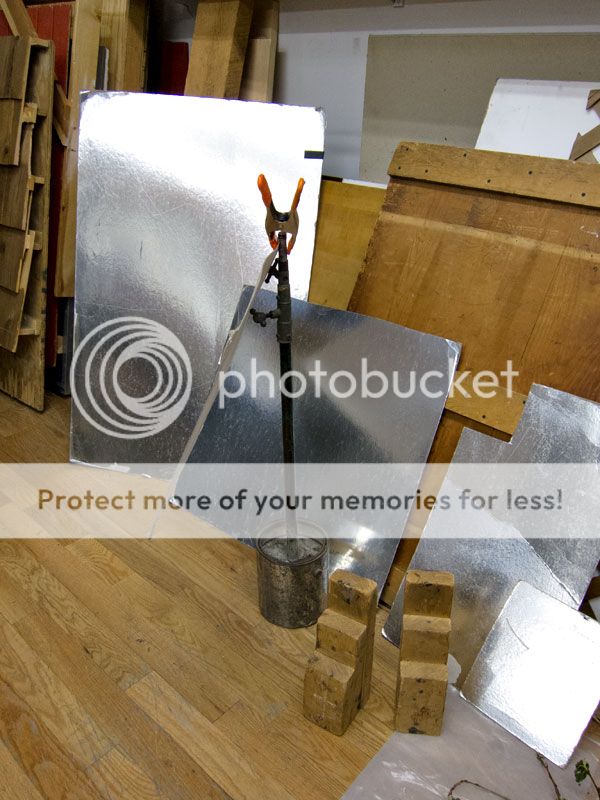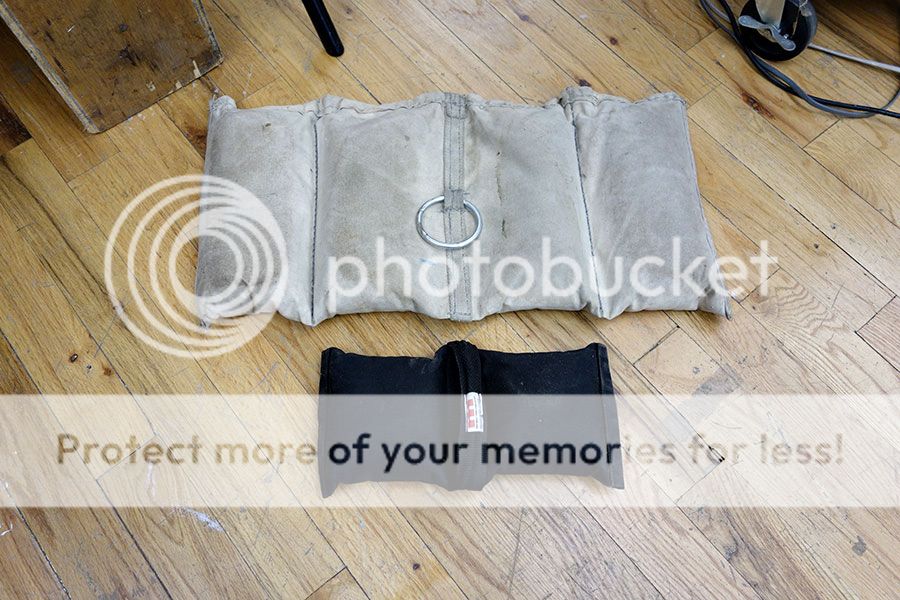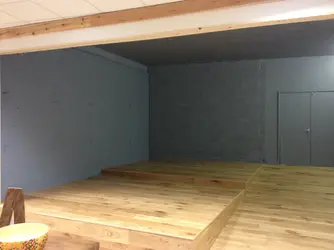Hi there Designer,
This is my situation:
My boss has decided he wants a photo studio. So he wants product photos taken as soon as items have imported into the UK. This will be constant and the manufacture images are toss. I've been given the task because I'm the only employee that can turn on a camera and also done the intermediate photography course at collage. I've also done a degree in information systems design so I know Photoshop very well. For this reason it is handed on my lap. Not complaining. Looking forward to the challenge and change of job. Just hope I get it right. My guess is he will eventually want photos of employees and lifestyle images for catalogs too, but for now just trying to learn to capture still objects.
I will be taking photos of items of all materials from oak furniture to painted metal aeroplane models, lamps to crome telescopes and leather stools.
Metal surfaces, such as "chrome" don't actually have a "color". They are basically mirrors and they reflect just like a mirror. For this reason it's advisable to have some large white and black boards that you can place out-of-frame of the shot so that the side of chrome cabinet will appear white.
Watch this video tutorial:
Episode 15 , Photographing Shiny Metal and Reflections - YouTube
(actually he has lots of great videos for about product photography)
The reason I thought of white washing the room is mainly for editing in photoshop, and I was under the impression more light is better than less.
Being able to control the light is the most important. You may eventually want to be able to use one wall to bounce light, but want to prevent any bounce from another wall (e.g. a flat black surface). But that's easily remedied. If the room is really being set up specifically as a studio, you can put hooks in the ceiling, get some sturdy wood dowels and drape fabric over it. E.g. some black flat fabric can prevent reflection if you need it. You can create drama with lights if you know how to play dark low-key or bright high-key shots.
I thought it would be handy to have a polorizing filter.
A polarizing filter is nice to remove glare from shiny surfaces. Furniture with glass (e.g. doors), glossy furniture, ... just remember that it all works just like a mirror. If the surface were a mirror, would you be able to see the light in the mirror? Often you can move the light. But sometimes you WANT a bit of reflection to show off a shine, but you want to control how much reflection you get. A polarizer (must be a "circular" polarizer... not a "linear polarizer" or "top polarizer") is nice because it'll let you dial the reflection down to a level you want. BUT... there is a trick. Since the flash is only illuminated for a split second, you can't see the reflection when you're setting up the shot because the light isn't on when you're setting up the shot. It's only on when the shutter is open (and only for a fraction of a second -- not enough to adjust the polarizer). You can take repeated shots and tweak, or you can use heads with modeling lights built-in (on - except for when the flash fires) which allows you to get a reference for how the light and shadow will work, and where the reflections will be.
There is actually a substantial difference in quality between high-end and low-end polarizers... this is one area where if you spend more, you're not paying more because of the brand... the performance of the filter actually is noticeably better. B+W brand is probably the gold standard in thread-on filters. Hoya's "Pro1" line (but only the "Pro1" line because Hoya also makes low-end filters) is also a good choice.
I was also under the impression that petal lens hoods are a good idea. To protect the lens and to protect the capture from unwanted light at the sides of the lens.
I always use a hood outside... generally not inside. Usually I can (and do) make sure no light is able to shine directly into the lens as this is what causes all sorts of interesting optical aberrations (flare, ghosting, etc.)
I am currently reading a book on Light, Magic and Science. I will get my boss to send me on some day courses too.
I suppose I should ask the forum members:
If this situation was handed to you what would be on your shopping list?
Really appreciate any advice.
I will post images of the studio and equipment on here when it is complete.
Thanks.
How much do you know about flash photography, metering and setting exposures when using flash?
You will need a way to trigger the flash. The 60D doesn't have a sync-cord socket... just a hot shoe. You can either use "wired" sync cords (you can get a hot-shoe adapter (VERY inexpensive) that has a sync-cord socket on it.) You can also mount an IR or radio trigger (radio triggers are the most popular, reliable, and don't require "line of sight" in order to communicate with the slave.)
Bowens makes a radio module (their own system) of the Gemini and you'd have to buy their compatible trigger to mount on the 60D (it just slides into the hot-shoe socket). You could also buy a 3rd party... PocketWizard brand is probably the most popular radio trigger system. They do make high end (read: expensive) line which supports the E-TTL flash, but you wont use that for studio flash... you really just need the more basic model designed only for manual flash (your studio flashes are not E-TTL compatible lights.)
Quality studio flash units put out a very predictable amount of light when they fire. But the choice of light modifiers will alter that. Also the distance and power level will alter that. You will eventually get to know your lighting such that you'll have a PRETTY GOOD idea of where to place the lights, how far, what power levels to use, and what exposure to set on the camera based on all that. But to meter studio lighting you'll want an incident light meter designed to work with flash. Sekonic is a very good line of meters (they're probably the most popular brand in meters). The L308 is the most basic model which can meter "flash" but it's a bit tricky... the meter MUST be at the position where you plant to place the product. Then you fire the flash. But to fire the flash usually requires you be standing back at the camera. So... you can either buy an extra radio trigger (so you can fire the flash while holding the meter in the right location) or you can get a meter that has a built-in radio trigger (which I think are only available for PocketWizard brand radios. E.g. a Sekonic L358 can take an "optional" PoketWizard brand radio trigger, but this would require that you have PocketWizard brand receivers on your lights.) If it were my money, and based on what I know now (I own a Sekonic L308 and I also own a Sekonic L758DR) I'd probably go with the L-358 at a minimum. It adds a lot of functionality that the 308 lacks. But the L308 will work... it's just a little less convenient so you wont work quite as efficiently.
















